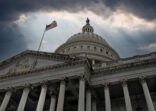HSBC Global Asset Management has applied for three fixed income funds to be sold in China (northbound funds) via the Hong Kong-China Mutual Recognition of Funds (MRF) scheme, according to records from the China Securities Regulatory Commission (CSRC).
The firm submitted its application for the HSBC Asian High Yield Bond Fund and the Asian Bond Fund in June, while the Asia High Income Bond Fund’s application was lodged in March.
When approved, the firm will have at least four northbound funds under the MRF scheme. Its first northbound product, the Asia Pacific ex Japan Equity Volatility Fund, was launched in February. At the time, the firm said that its Shanghai-based joint venture firm, HSBC Jintrust Fund Management, will act as the master agent for the fund, which will be initially sold through HSBC Bank in China.
All three Asian fixed income funds have grown in size since their launch in Hong Kong and collectively have nearly $4bn in assets, according to data from FE Analytics. But the equity fund has only around $103m.
| Fund |
AUM |
Launch date |
| HSBC Asian High Yield Bond Fund |
$842.7m |
2011 |
| HSBC Asian Bond Fund |
$2.1bn |
2011 |
| HSBC Asia High Income Fund |
$996.1m |
2017 |
| HSBC Asia Pacific ex Japan Equity Volatility Focused |
$103.9m |
2015 |
Source: FE Analytics
FSA sought more information from the firm, but it was not able to answer in time for publication.
HSBC Global is one of the firms that manage a number of Hong Kong-domiciled funds. Out of its 66 SFC-authorised funds, 18 are locally domiciled, FE data shows.
HSBC Jintrust Fund Management also sells its mainland-domiciled funds in Hong Kong (southbound funds) via the MRF scheme. It has three southbound funds approved by the Securities and Futures Commission for sale in the SAR, according to the regulator’s records.
Fixed income turnaround
Offshore fixed income products have seen sizable inflows from domestic Chinese investors this year.
Of all qualified domestic institutional investor (QDII) funds in China, global bonds have become the most popular category this year, with net inflows of Rmb 1.48bn ($210m) as of the end of March, according to data from Morningstar. QDII funds are products in which mainland Chinese firms are able to raise domestic money for offshore investment, within allowable quotas.
This is a huge turnaround from last year, when the global bond category had the largest net outflows (Rmb 6bn) among all categories in the QDII space.
Northbound inflows continue
On the MRF front, for the month of May (the latest data available) Hong Kong-domiciled funds sold in the mainland had net inflows of Rmb 969.7m, according to data from the State Administration of Foreign Exchange (SAFE).
May marks the fourth consecutive month that northbound funds had net inflows — from February to May cumulative net sales were Rmb 3.36bn.
The inflows come after mainland investors withdrew money from northbound MRF funds for 14 consecutive months. For the full year 2018, net outflows totalled Rmb 3.4bn.
In total, there are around 14 northbound funds that have been approved by the CSRC, according to the regulator’s records. Three of them, which are managed by Haitong Asset Management and JP Morgan Asset Management, were approved for sale this year. Twelve more products are still waiting for approval from the regulator.
Southbound funds — mainland funds sold to Hong Kong investors — on the other hand had net outflows of Rmb 39.7m in May, according to SAFE. Year-to-date, total net outflows amounted to Rmb 104m.
The SFC has approved around 50 China-domiciled funds to be sold in Hong Kong. However, only two dozen funds have been made available for sale to investors, according to SFC records.
The proportion of inflows is still far greater for Hong Kong funds sold to domestic investors in China. Since the MRF scheme started in 2015, net inflows for northbound funds total Rmb 11.49bn, while southbound products were way behind with total inflows of Rmb 328.6m, according to SAFE.

















